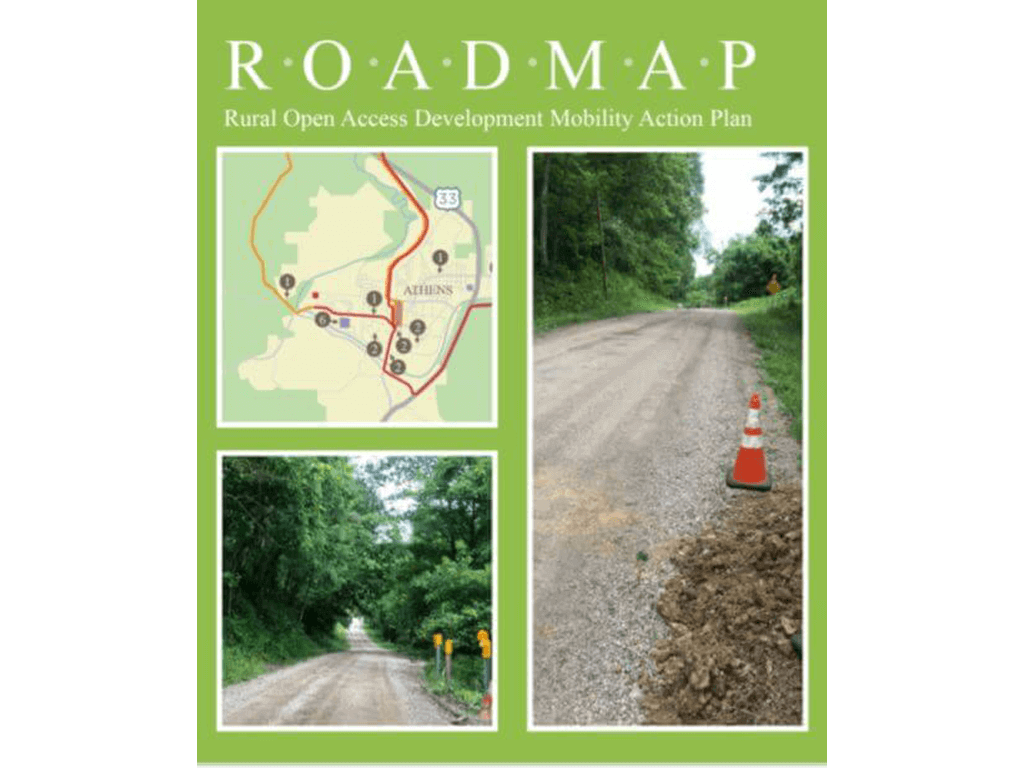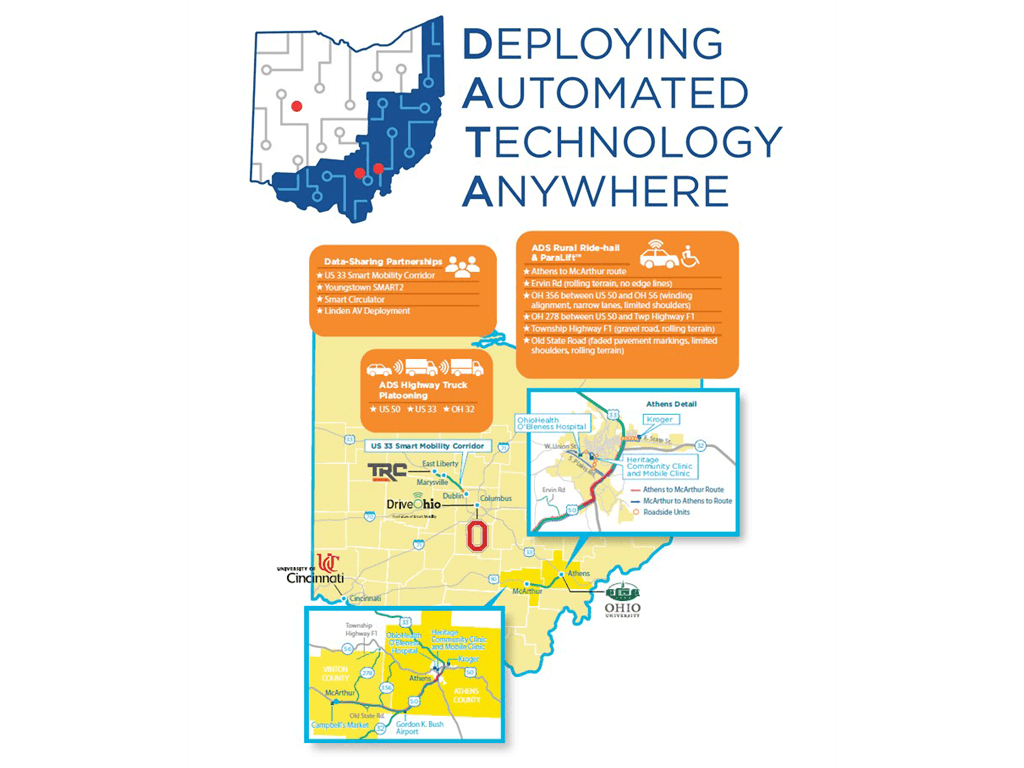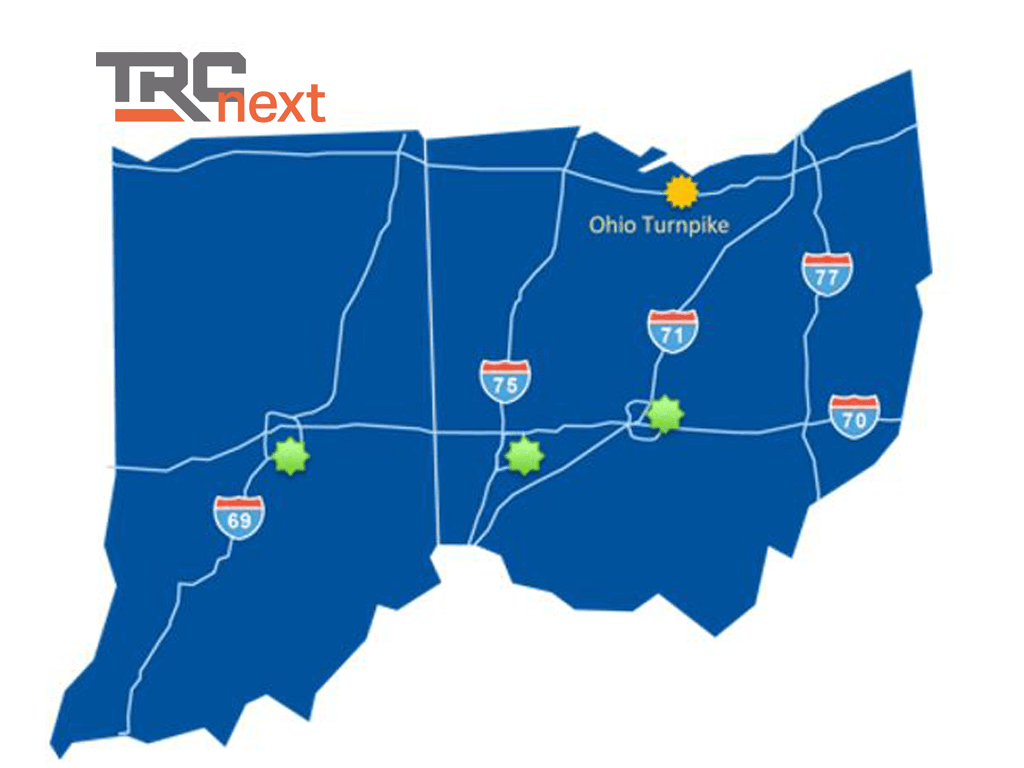Innovation
Innovation
Keeping ahead of what’s next in transportation.
TRC and our partners are leading the world in making mobility smarter, safer and greener.
Innovation has been at the heart of TRC’s heritage for nearly 50 years. From the dawn of the Interstate Era to today’s fast-changing world of smart highways and autonomous mobility, foreseeing what’s next in transportation technologies and infrastructures has been our strength, our reason for being.
By constantly aligning our world-class expertise, experience and research capabilities to keep pace with emerging technologies – and those lying just beyond – TRC helps transportation innovators imagine that future and keep competitive steps ahead in making each new generation of mobility smarter, safer and greener.

Rural ADS Project
In a little under a year, DriveOhio’s Rural Automated Driving Systems (ADS) project collected nearly 60 terabytes of data that will help define future technology needs for automated vehicles in rural environments. While automated driving systems have the potential to dramatically improve roadway safety, data shows that these systems must be refined to maximize that potential in rural areas.
Most automated vehicle testing to date has been conducted in urban areas without the hilly and curvy terrain, limited sight distances, and shaded tree canopies typical of a rural environment. Funded in part by a $7.5 million grant from the U.S. Department of Transportation, this project accomplished one of the most comprehensive testing efforts yet to be conducted on rural roads in the United States.
The deployment showcased three passenger vehicles equipped with technology capable of controlling steering, acceleration, and braking, including the ability to perform lane changes and navigate intersections. Drivers from the Transportation Research Center, Inc. and Ohio University tested the technology on divided highways and rural two-lane routes in Athens and Vinton County.

Advanced Driver Assistance Systems & Aftermarket-Modified Vehicle Compliance
Driver-assistance technologies – automatic braking, lane-departure warning, adaptive cruise control and other advanced systems – are becoming increasingly standard on American cars and light trucks. These systems dramatically improve the safety and performance of today’s vehicles by assisting in routine driving tasks. But their multiple sensors, cameras and other complex electronics increasingly pose challenges for the performance aftermarket and collision-repair industries.
To help address these challenges, in 2020 TRC Inc. presented new research that analyzes how aftermarket professionals can ensure their repairs or modifications comply with OEM standards for safety and performance.
The new TRC white paper, “Advanced Driver Assistance Systems and Aftermarket-Modified Vehicle Compliance,” is designed to give these professionals the confidence that advanced technologies will continue to work as intended whenever vehicles are modified. The research draws on TRC’s years of dynamics testing and automotive systems expertise to analyze how aftermarket professionals can ensure their repairs or modifications comply with OEM standards for safety and performance.
Joining TRC in the research effort were SCA Performance, asTech, the Equipment & Tool Institute and the Specialty Equipment Market Association.
Learn more and download the Advanced Driver Assistance Systems white paper.

Rural Open Access Development Mobility Action Plan
Rural Open Access Development Mobility Access Plan (ROADMAP) is a three-year initiative funded by the Department of Energy. This project aims to pilot and study advanced vehicle technologies in a rural setting to gather information and enhance awareness of innovative mobility solutions that fill rural transportation gaps. This project will combine rural mobility access with alternative fuel technology, advancing research and development in the clean transportation sector.
Additionally, the ROADMAP Initiative will work hand-in-hand with the Appalachian Clean Transportation (ACT) Initiative, a 2-year policy, and planning project focused on the growth of the clean transportation sector. Four regional conferences and policy development will be associated with this initiative.
Rural Electrification in Ohio: Challenges and Opportunities
This report assesses the barriers and opportunities to transportation electrification in rural Ohio, with a focus on Athens County and the surrounding rural and Appalachian counties. Information and data on electric vehicles and electric vehicle supply equipment (EVSE) infrastructure in Athens County is addressed within the larger context of electric vehicle adoption in rural America, and the county is frequently turned to as a test case for understanding the unique needs of rural communities in order to make targeted recommendations for EV readiness measures.

Deploying Automated Technology Anywhere (DATA) Project
TRC Inc., along with its partners, is leading an Ohio-based team of industry, academia and community partners. Other partners include The Ohio State University, Ohio University and the University of Cincinnati. The four-year plan will test the safe integration of automated driving systems on rural roadways and look at potential economic impacts of this technology. Focusing on 32 counties in Ohio’s rural Appalachian region, studies supported by this grant will be the most comprehensive effort yet to be conducted on our nation’s rural roads.

I-70 Truck Automation Corridor
In June 2020, TRC Inc. was part of the team awarded a grant focusing on automated trucking technology. The Federal Highway Administration (FHWA) has awarded the team $4.4 million for their Interstate 70 (I-70) Truck Automation Corridor project through the Advanced Transportation and Congestion Management Technologies Deployment (ATCMTD) Program.
The I-70 Truck Automation Corridor project is a collaboration between ODOT, DriveOhio, the Indiana Department of Transportation (INDOT), and the Transportation Research Center Inc. (TRC) that will deploy smart logistics solutions along a stretch of I-70 between Columbus, Ohio and Indianapolis, Indiana. This multi-state approach, along with participation from technology providers, truck manufacturers, regional logistics councils and private freight companies, makes this project unique. With partners contributing $4.5 million in matching funds, the total investment in Ohio for this project will be $8.9 million.